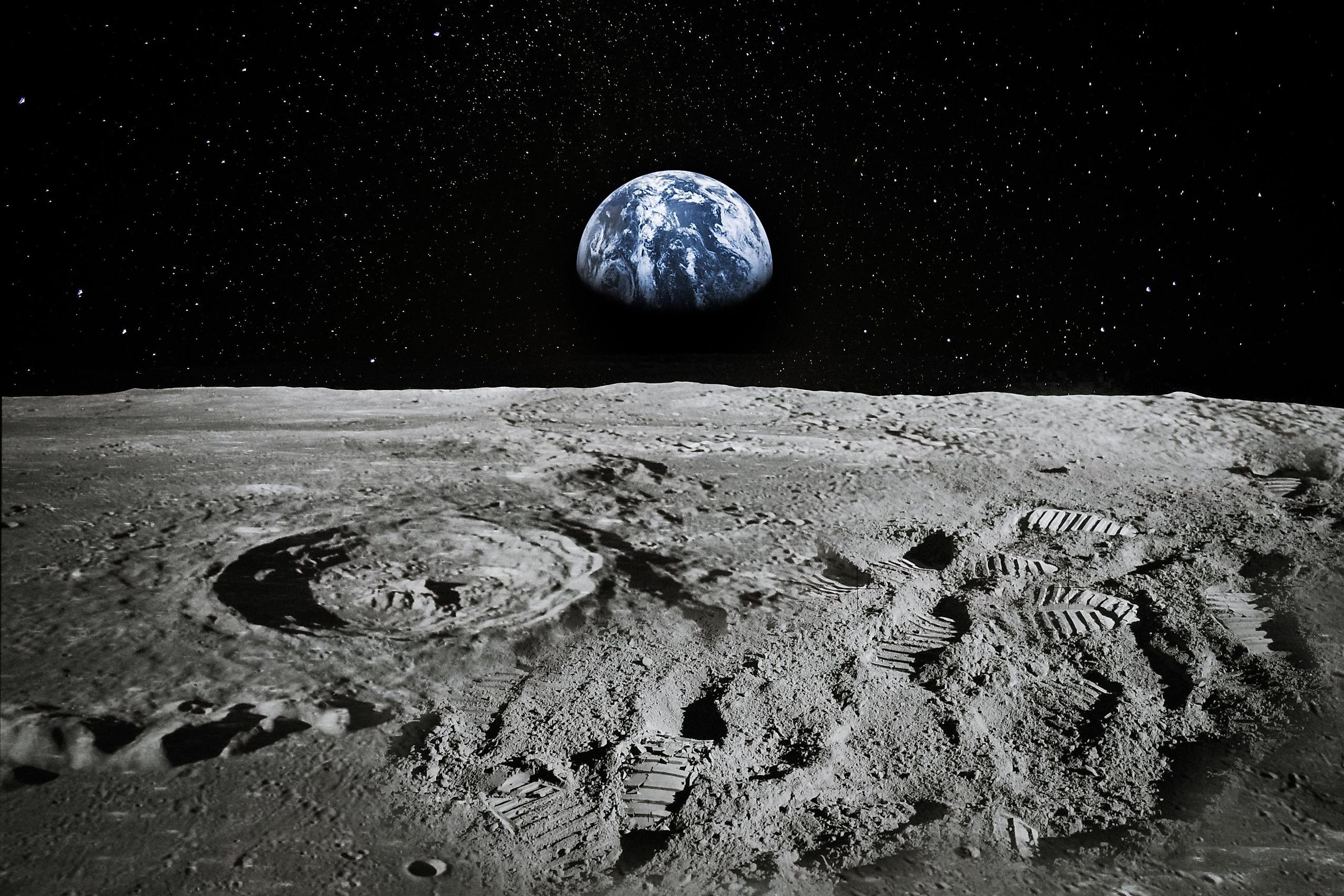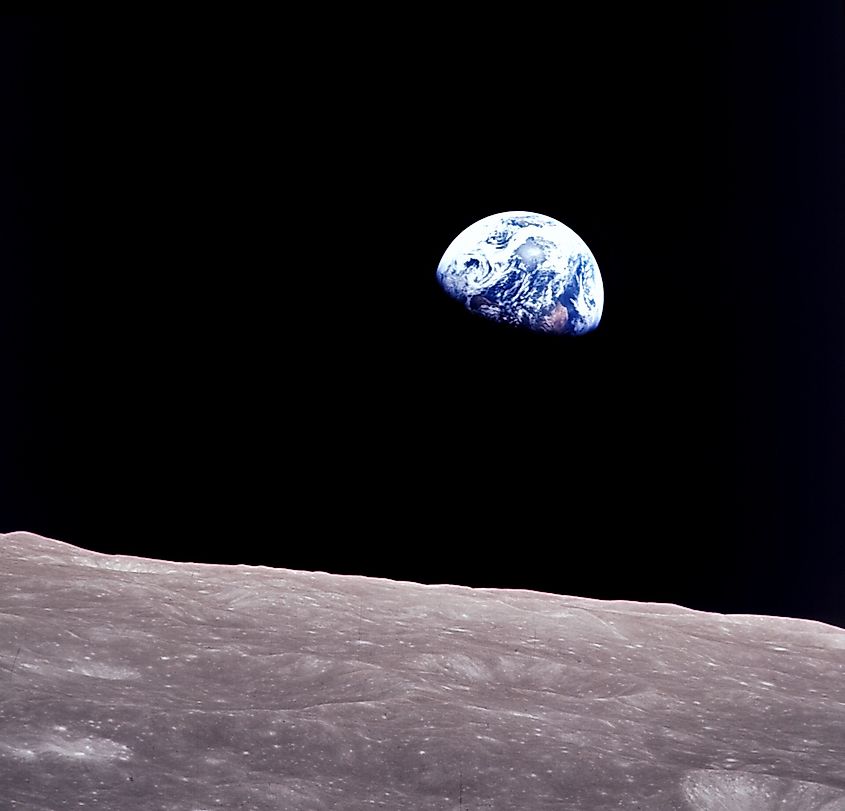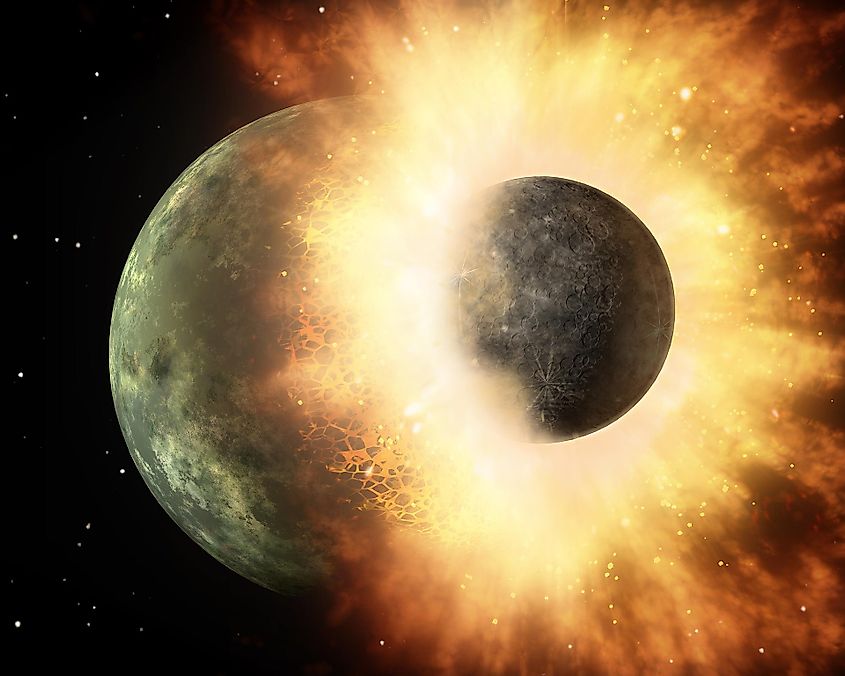
How Did The Moon Form?
For most of human history, the moon was a mysterious object. The moon is so close to the Earth that it is the only celestial object in which we can see surface features with just the naked eye. How the moon formed and what it is made of are all fairly recent discoveries, having only been truly revealed since humanity ventured to the moon in the 1960s and 1970s. As it turns out, the Earth and its moon have more in common than we could have imagined.
Composition Of The Moon

Humanity first stepped foot on the moon in 1969 with Apollo 11. From 1969 to 1972, NASA accomplished six successful landings on the lunar surface during the Apollo Program. Not only was this a significant technological achievement, it also gave scientists an unprecedented opportunity to study the surface of the moon. Apollo astronauts brought back multiple samples of the lunar surface, allowing scientists on Earth to determine the age and composition of the moon. Lunar samples revealed something rather interesting. The moon is remarkably similar in composition to the Earth, yet it is not exactly identical. The age of the moon is also not much younger than the age of the Earth, around 4.5 billion years old. For decades, scientists had tried to explain how the moon could have formed. Relative to the size of the Earth, the moon is a fairly large object, and it is unlikely that it formed simply from debris that fell into Earth orbit. Some proposed that the moon formed elsewhere in the solar system and was captured by the Earth’s gravity. Another explanation was that the young Earth was spinning so fast that part of it separated from the Earth, similar to how a bacterium will split in half. When scientists discovered that the moon was similar in composition to the Earth, it largely disproved these ideas. If the moon were a captured object, it would not have a composition so similar to the Earth. If it simply budded off the Earth, its composition would be 100% identical to the Earth. The fact that the moon’s composition was similar yet not identical to the Earth suggested something else caused its formation.
Planetary Impact

Shortly after the formation of the sun, a large disk of stellar material formed around the sun called a protoplanetary disk. Although the solar system contains eight planets today, in the early days of the solar system, as many as a hundred planets likely formed around the sun. The early solar system was chaotic, and impacts between planets were common. Every planet in our solar system experienced one or more planetary impacts, and the Earth is no exception. During the Earth’s formation, another planet formed nearby. This planet, called Theia, was approximately the same size as Mars. Theia impacted the young Earth 4.5 billion years ago. Such an impact would be unlike anything humanity has witnessed, and there was a risk that the impact could have completely destroyed the Earth. Fortunately, the impact between Theia and Earth happened at just the right angle and speed that the Earth absorbed the smaller planet. Debris from the impact was launched into orbit and formed a ring around the young Earth. Over time, this debris coalesced to form the moon.
The planetary impact theory for the moon’s formation explains the size of the moon, its age, and its composition. Since debris from both Earth and Theia formed the moon, it has a composition similar to the Earth’s yet not identical. That’s because part of the moon came from Theia. Computer simulations have been used to recreate the impact, showing that such an impact would have produced an object identical to our moon.











